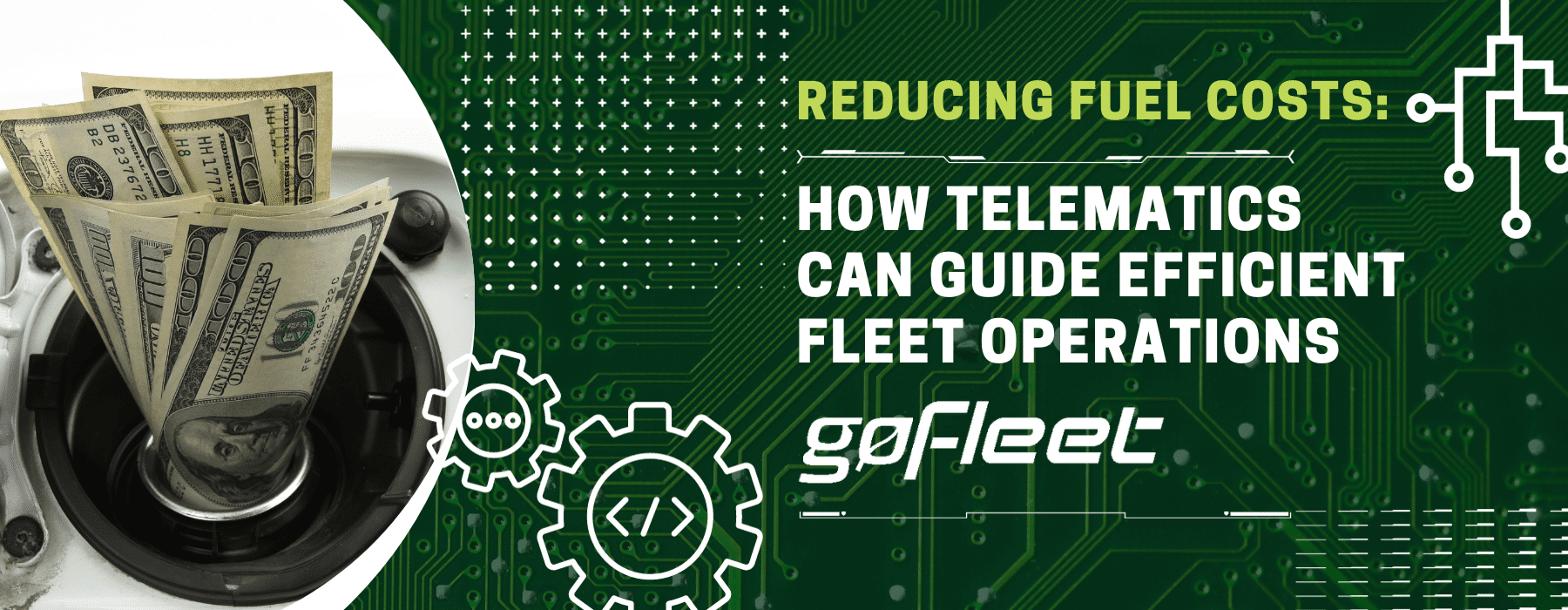In the dynamic world of fleet operations, scalability is not just a buzzword but a critical necessity. As businesses grow, so do their logistical needs, making the ability to scale up fleet operations efficiently crucial for maintaining competitiveness and meeting evolving market demands. Scalability in this context implies the ability to increase fleet size and operational capabilities without proportionate increases in complexity or costs.
The journey towards scalability, however, is fraught with challenges. Fleet operators often grapple with issues such as managing increased operational costs, ensuring consistent service quality across a larger fleet, maintaining compliance with evolving regulations, and addressing the environmental impact of scaling operations. These challenges underscore the need for strategic planning and investment in appropriate solutions.
Technology emerges as a linchpin in achieving scalable fleet operations. In an industry where the margin for error is minimal, and efficiency is paramount, leveraging the right tech tools can be transformative. A recent report underscores this trend, predicting that the Fleet Management market will grow at a Compound Annual Growth Rate (CAGR) of 15.5%, from USD 25.5 billion in 2022 to USD 52.4 billion by 2027.
This growth trajectory is indicative of the increasing reliance on technology to address scalability challenges in fleet operations. By integrating advanced fleet management systems, telematics, AI, and predictive analytics, operators can streamline operations, optimize resource allocation, and enhance decision-making processes, paving the way for sustainable and efficient growth.
Understanding the Need for Scalability in Fleet Operations
Scalability in fleet operations refers to the ability of a fleet to expand its capacity and capabilities efficiently as demand increases. This involves not just adding more vehicles, but also enhancing operational processes, workforce management, and technological infrastructure to handle larger volumes of transport and logistics tasks without compromising on efficiency or service quality.
The Impact of Market Changes on Fleet Operations
The fleet industry is highly susceptible to market changes such as fluctuating fuel costs, evolving customer expectations, and shifts in regulatory landscapes. For instance, the growing emphasis on eco-friendly transportation solutions drives the need for fleets to adapt with electric or hybrid vehicles.
Such market dynamics necessitate a scalable approach to fleet management, enabling operators to adjust their strategies and resources swiftly and effectively to stay competitive and compliant. However, there are a number of challenges in scaling fleet operations:
- Cost Management: Scaling operations often come with increased costs – from vehicle acquisition to maintenance and staffing. Balancing these costs while striving for growth is a significant challenge.
- Efficiency: As fleets grow, maintaining operational efficiency becomes more complex. Issues like route optimization, vehicle downtime, and driver management can become more challenging to handle at a larger scale.
- Compliance: Adhering to a myriad of regulations, which may vary regionally or internationally, is crucial. As fleets expand, ensuring compliance across different jurisdictions adds another layer of complexity.
Understanding and addressing these aspects are fundamental to achieving scalable fleet operations. Implementing strategic planning and leveraging technology are key to overcoming these challenges and enabling sustainable growth.
Key Technologies for Scalable Fleet Operations
Embracing the right technology equips fleet operators with the tools necessary for scalable and efficient fleet management, positioning them to adapt to changing market demands and operational challenges effectively:
Fleet Management Systems (FMS)
- Features: FMS offer features like vehicle tracking, fuel management, maintenance scheduling, and driver performance analysis.
- Benefits: They enable better asset utilization, reduced operational costs, improved compliance, and enhanced safety. FMS also provide valuable insights for strategic decision-making.
Telematics and Real-Time Data Analysis
- Role: Telematics systems gather and transmit real-time data on vehicle location, speed, and diagnostics.
- Advantages: This data helps in monitoring fleet performance, improving driver behavior, and reducing fuel consumption.
Automated Route Planning and Optimization
- Functionality: These tools use algorithms to determine the most efficient routes.
- Impact: They reduce delivery times and costs, optimize fuel usage, and enhance customer satisfaction.
Predictive Maintenance using IoT and AI
- Mechanism: IoT sensors collect data on vehicle conditions, which AI algorithms analyze to predict maintenance needs.
- Outcome: This proactive approach minimizes downtime, extends vehicle life, and saves on repair costs.
Integration of AI and Machine Learning for Strategic Decision Making
- Application: AI and ML analyze large data sets to identify trends, forecast demands, and optimize fleet operations.
- Benefits: This leads to more informed decision-making, better resource allocation, and improved overall operational efficiency.
Implementation Strategies for Tech Tools
Implementing the right technological tools is pivotal for scaling fleet operations. However, this process requires careful planning and execution to be effective.
Assessing current technological infrastructure and identifying gaps:
- Conduct a comprehensive audit of the existing technology and processes.
- Pinpoint specific areas that need upgrades or new technologies for improved scalability.
Choosing the right technology partners and providers is a critical step. It involves:
- Conducting thorough research on potential providers, focusing on their experience, product reliability, and support.
- Ensuring that the selected technology aligns well with the fleet’s existing systems and long-term objectives.
When it comes to integrating new technologies, training staff is key. This involves:
- Developing detailed training programs to familiarize staff with the new systems.
- Promoting a culture of adaptability and openness to change within the organization.
Lastly, developing a phased implementation plan is crucial for a smooth transition:
- Implementing the new technology in manageable phases, with clear goals and timelines set for each stage.
- Regularly monitoring progress and making necessary adjustments based on feedback and performance data.
Through a structured approach that includes comprehensive assessment, careful selection of technology partners, effective staff training, and a well-planned implementation strategy, fleet operations can successfully integrate new technologies and achieve scalable growth.
Measuring the Impact of Technology on Scalability
To measure the impact of technology on scalability, it’s crucial to monitor specific KPIs (Key Performance Indicators) such as vehicle utilization rates, fuel efficiency, maintenance costs, and driver performance metrics. These indicators provide valuable insights into the efficiency and effectiveness of fleet operations.
Using Data Analytics for Continuous Improvement
Data analytics plays a vital role in continuous improvement. By analyzing data collected from fleet operations, businesses can identify trends, pinpoint inefficiencies, and make informed decisions to optimize their fleet performance.
Future Trends and Innovations in Fleet Technology
As we look towards the future of fleet operations, it’s clear that technology will continue to play a transformative role. Emerging innovations and trends are set to reshape the landscape of fleet management, offering new opportunities for efficiency, sustainability, and scalability.
In this section, we explore some of these key developments and consider how businesses can prepare for the challenges and opportunities they present.
Emerging Technologies in the Fleet Industry
- Autonomous Vehicles: The advent of self-driving technology is poised to revolutionize fleet operations, potentially improving safety and efficiency while reducing labor costs.
- Electric Fleets: With a growing focus on environmental sustainability, electric vehicles (EVs) are becoming more prevalent. EVs offer the potential for lower operational costs and reduced emissions.
- Advanced Telematics and IoT: Enhanced telematics systems and the Internet of Things (IoT) are expected to provide even deeper insights into fleet operations, enabling more precise tracking and management.
- AI and Big Data Analytics: AI and big data are becoming increasingly sophisticated, offering advanced predictive analytics for maintenance, route optimization, and load management.
The Role of Sustainability in Scalable Fleet Operations
- Environmental Considerations: Sustainability is becoming a core consideration in fleet management, with companies increasingly looking to reduce their carbon footprint.
- Regulatory Compliance: As environmental regulations tighten, fleets will need to adapt to stay compliant, further driving the adoption of green technologies like EVs and alternative fuels.
Preparing for Future Challenges and Opportunities
- Adapting to Technology Shifts: Fleet operators must stay abreast of technological advancements and be ready to integrate new solutions that enhance scalability and efficiency.
- Workforce Training and Management: As technologies evolve, training the workforce to adapt to new systems and processes will be crucial.
- Strategic Planning for Long-Term Success: Companies will need to strategically plan for the long term, factoring in potential technological disruptions and market changes.
The future of fleet operations is set to be shaped by these emerging technologies and trends. Preparing for them now will enable fleet operators to not only meet future challenges but also seize new opportunities as they arise.
Final Thoughts
As we conclude this exploration into the pivotal role of technology in scaling fleet operations, it’s clear that the path to sustainable and efficient growth in this sector is intricately linked with technological advancement.
The integration of innovative solutions like Fleet Management Systems, telematics, AI, and predictive analytics has proven not just beneficial but essential for modern fleet operations. These technologies enable businesses to address key challenges such as cost management, operational efficiency, and compliance, while also paving the way for scalability in an ever-evolving market.
Embracing these technological advancements is not a mere option but a necessity for fleet operators who aim to stay competitive and meet the increasing demands of the industry. The future of fleet operations is undeniably tech-driven, with emerging trends like autonomous vehicles, electric fleets, and advanced data analytics shaping the landscape.
If you’re looking to optimize your fleet operations and harness the power of the latest technological innovations, contact your GoFleet specialist. Our team of experts is ready to provide you with tailored solutions and insights to ensure your fleet not only meets the current industry standards but is also prepared for future challenges and opportunities.





